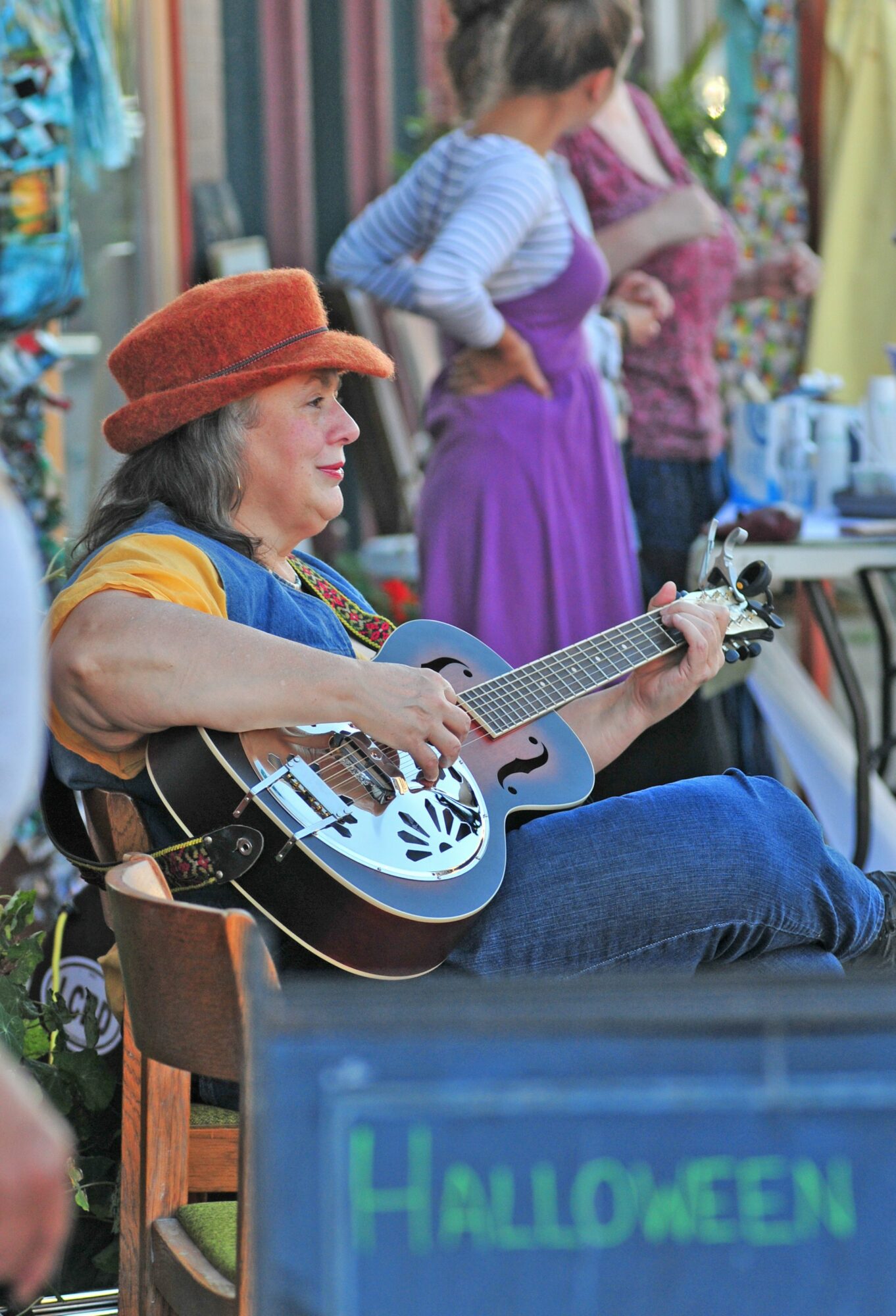 Today we’d like to introduce you to Wolf .
Today we’d like to introduce you to Wolf .
Alright, so thank you so much for sharing your story and insight with our readers. To kick things off, can you tell us a bit about how you got started?
Six years ago, I had a strong urge to learn woodworking basics so I could build a cigar box guitar. I’ve been a guitarist since age 9 and have been in a variety of Bluegrass and Blues bands for the last 15 years and played Country and Rock before that. But there’s something about rustic, home-made instruments that grabs me. I found out that a friend of mine, Paul Kerns, besides being a master cabinet builder, also built mountain dulcimers: over 300 of them! We talked about cigar box guitars and woodshop lessons and agreed to tackle the project together, with him teaching and me learning and playing.
Very early in the first year, he handed me some carving tools and a pattern and told me to carve a spoon for practice. After the first spoon, I was addicted! I’ve built two cigar box guitars, one mandolin, and carved about 400 spoons in the subsequent years. Spoon carving bled into rolling pins and forks and spatulas, then to medieval candle lanterns and Viking Sea chests. Now, I’m a reenactor who’s constantly covered in wood shavings.
I like being able to take a branch or a board that would typically get tossed into a burn pile and turn it into a useful, durable item that will survive to be handed down with minimal maintenance. Form is nice, but function is my priority.
I’m sure it wasn’t obstacle-free, but would you say the journey has been fairly smooth so far?
The first big challenge was not cutting myself with the razor-sharp tools! There were several nicks here and there, but laying open a knuckle with a gouge made me reevaluate my grips and angles on the tools. I play lead guitar: I need all fingers attached and functioning.
Even repetitive stress injuries became a problem, and I ended up having surgery on my left hand to release a trigger finger. That was brutal, and I was on stage once still in bandages, playing a slide guitar that night. I could grip the steel bar, but that was it.
I’ve since learned better techniques, frequently wear a heavy leather glove for protection, and stopped bleeding on the floor.
Finding the right types and sizes of wood is always a challenge because I won’t cut a tree or even a limb just to carve a spoon. If a tree is taken down by a storm or by necessity, then I start figuring how many spoons are in there. But what I really take satisfaction in is carving what I call Heritage Spoons from a tree or board with history. A friend in her 80s had to take down a huge maple tree that her father had planted in about 1915. The tree was dying and very close to falling on her family’s house. She gave me chunks of the tree, which I split down, then carved her a big spoon with the family name and a dedication stamped on it. I also obtained a chunk of white oak siding during the restoration of Rock Mill, an 1824 grist mill here in Ohio on the Hocking River. That became a spoon I donated to a fundraiser for the restoration of the mill.
But having a hobby and all the tools I needed to craft spoons was a blessing during the pandemic. I live rurally, share a house with my elderly mother, and we decided together to do a serious lockdown during the first year of the pandemic for our own safety. With a basketful of tools and a stack of kiln-dried hardwood boards, I cranked out spoons by the dozens that first year.
Thanks – so, what else should our readers know about your work and what you’re currently focused on?
I demonstrate spoon carving at a few festivals in Central Ohio during the summer months. People are fascinated at the amount of time and finesse it takes, and to my surprise, no one has ever said they’d rather use the cheap spoons from big box stores. People really do appreciate handcrafted pieces, especially when they see the craftsperson carving the spoons right in front of them.
As a historical reenactor, I’ve automatically got my niche in the historical community. I participate in the yearly Ashville Viking Festival here in Ohio in spring. I’m the only spooncarver there. I also demonstrate carving at Lily Fest in the Hocking Hills of Ohio in late July. As a member of the reenactors’ group, The Lost Viking Horde, we build an authentic period tent city in the woods adjacent to the festival grounds and people coming in can walk through our encampment as they enter the festival. With everything from a working kitchen to a double forge and a blacksmith, axe-throwing range,
And a spoon carver! The first year there for me, I met with two young reenactors who were interested in picking up the skills, so we covered the floor of the tent in woodchips over the three-day weekend. With axes and gouges, we raided the cook’s pile of firewood, but I gave him finished spoons in payment. I carve, he cooks, we have an understanding…
I think the thing that sets me apart from other crafters is my focus on function over form. I don’t like making “wall-hanger” spoons. You should be able to stir your chili, mix your bread dough, sugar your tea, and enjoy your spoon. And being a 65-year-old female woodcarver running around camp with axes is not a common sight to most people.
Are there any apps, books, podcasts, blogs, or other resources you think our readers should check out?
I think I’ve learned the most from my teacher, Paul, in real life, but there are a lot of tutorials on YouTube, and a lot of inspiration on Pinterest. One video series from a carver in Ukraine has been educational. I have no clue what his name is since I’m not versed in Cyrillic and none of the audio is in English, but I can watch his hands, how he uses his tools, sets up his workbench, and that’s all I need. Pinterest is a wealth of inspiration, and it’s comforting to know there are other carvers out there doing amazing work. I don’t feel any need to carve an elaborately detailed Welsh Love Spoon to hang on my wall, but I know enough about carving to deeply appreciate the time and skill that takes.
Contact Info:







Image Credits
John Halley











